Microclimate Changes Due to the Operation of Energy Infrastructures †
Abstract
:1. Introduction
1.1. Effects of Climate Change
1.2. Future Effects of Climate Change
2. Study of Climate Indicator Trends in Areas with Energy Production Units
2.1. Hanasaari Power Plant/Finland
2.2. Markbygden Wind Farm/Sweden
2.3. Rønland Offshore Wind Farm/Denmark
3. Conclusions
- In areas where thermal energy production units have been installed, it is observed that their operation contributed to an increase in the average annual and maximum annual temperature of the wider area. This increase appears to be more pronounced when there is more than one thermal power generation unit in the same installation area. Regarding the rainfall, no precise conclusion can be reached because in some areas it seems that their operation has not affected the average amount of precipitation in the annual rainfall and in some others, it seems that over time it has shown a decrease.
- In areas where hydroelectric energy production units have been installed, it is observed that their operation contributed to the increase in the average height of the annual rainfall of the wider area. At the same time, a small increase in the average annual and maximum annual temperature of the wider installation area is also observed. Of course, this increase could be due to other industrial activities and not to the operation of the hydroelectric plants.
- No precise conclusion can be drawn for the wind farms because their installation has started in the last decade and no specific and correct conclusions can be drawn about the effects on the microclimate of the area from their installation and operation. What could be expressed is that because for the construction and operation of a wind farm it is necessary to open roads and squares as well as storage areas, this results in the deforestation of trees on the mountain or even an entire slope. Thus, studying the climate data collected for the specific areas, it could be considered that these facilities in turn contribute and to a very small extent to the increase in the temperatures of the local microclimate.
- For the PV parks, no specific installation was recorded in the above chapters because the parks examined were of very small capacity (<50 MW) and it was also not possible to find climate data at a local level. Nevertheless, in various studies (‘PEC.AN.’) the air temperature differences in the center of a planned photovoltaic plant (power 50 MWp) for the entire duration of 24 h are expected to be negligible and not to exceed 0.25 °C, while the soil temperature in the center of the planned solar park does not change at all. In addition, PV parks require large areas and their installation causes shadows on the natural vegetation, which may lead to an increase in humidity in the local microclimate.
Author Contributions
Funding
Institutional Review Board Statement
Informed Consent Statement
Data Availability Statement
Conflicts of Interest
References
- Arnell, N.W.; Lowe, J.A.; Challinor, A.J.; Osborn, T.J. Global and Regional Impacts of Climate Change at Different Levels of Global Temperature Increase. Clim. Chang. 2019, 155, 377–391. [Google Scholar] [CrossRef]
- Available online: https://unfccc.int/documents/622338?gclid=EAIaIQobChMIvJPI7be5_wIVDQiLCh2eRA-FEAAYAiAAEgIb_PD_BwE (accessed on 1 April 2023).
- Wheeler, S.; Zuo, A.; Bjornlund, H. Farmers’ Climate Change Beliefs and Adaptation Strategies for a Water Scarce Future in Australia. Glob. Environ. Chang. 2013, 23, 537–547. [Google Scholar] [CrossRef]
- Trnka, M.; Rötter, R.P.; Ruiz-Ramos, M.; Kersebaum, K.C.; Olesen, J.E.; Žalud, Z.; Semenov, M.A. Adverse Weather Conditions for European Wheat Production Will Become More Frequent with Climate Change. Nat. Clim. Chang. 2014, 4, 637–643. [Google Scholar] [CrossRef]
- Available online: https://unfccc.int/topics/science/workstreams/cooperation-with-the-ipcc/the-fifth-assessment-report-of-the-ipcc?gclid=EAIaIQobChMI_IGwq7i5_wIVlQCLCh00Nw2REAAYAiAAEgKrr_D_BwE (accessed on 5 March 2023).
- Booth, C.A.; Hammond, F.N.; Lamond, J.; Proverbs, D.G. Solutions for Climate Change Challenges in the Built Environment; Innovation in the Built Environment Series; Wiley-Blackwell: Hoboken, NJ, USA, 2012; ISBN 978-1-4051-9507-2. [Google Scholar]
- Collins, W.; Colman, R.; Haywood, J.; Manning, M.R.; Mote, P. The Physical Science behind Climate Change. Sci. Am. 2007, 297, 64–73. [Google Scholar] [CrossRef] [PubMed]

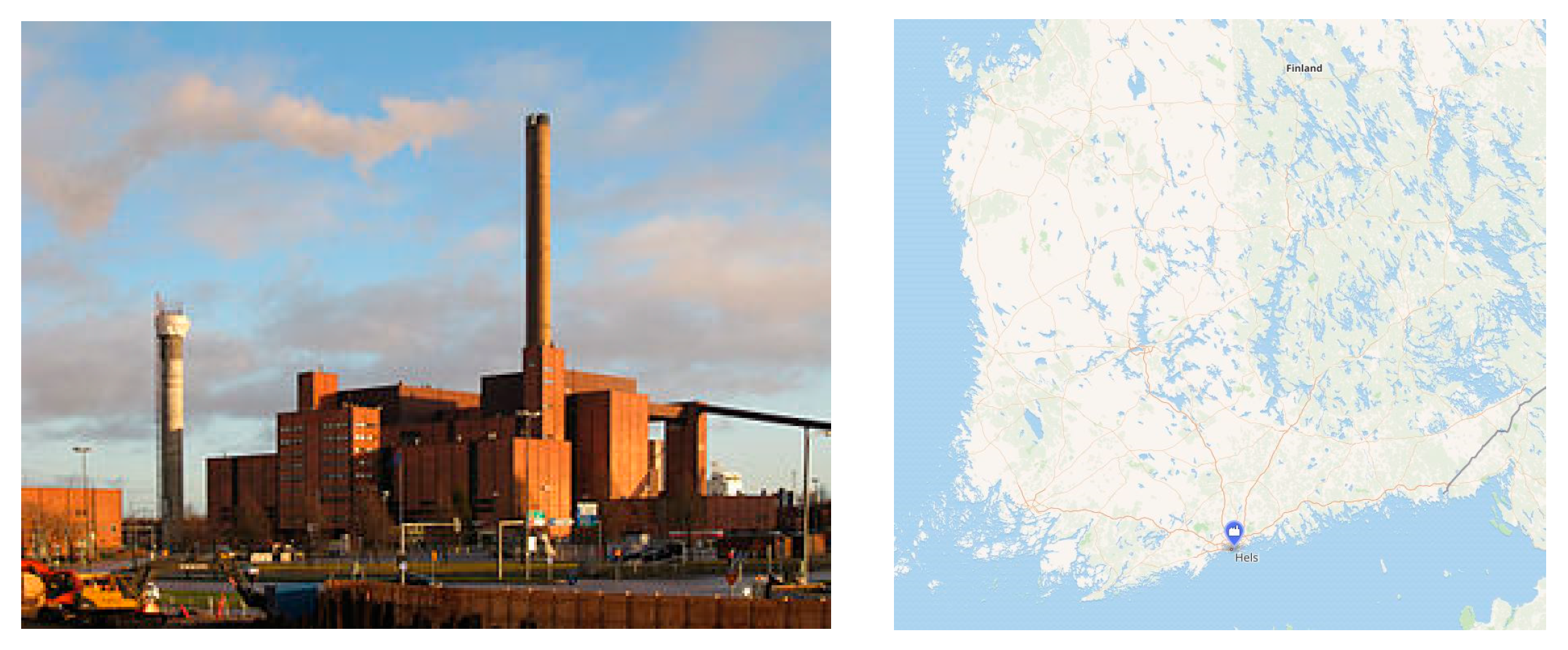
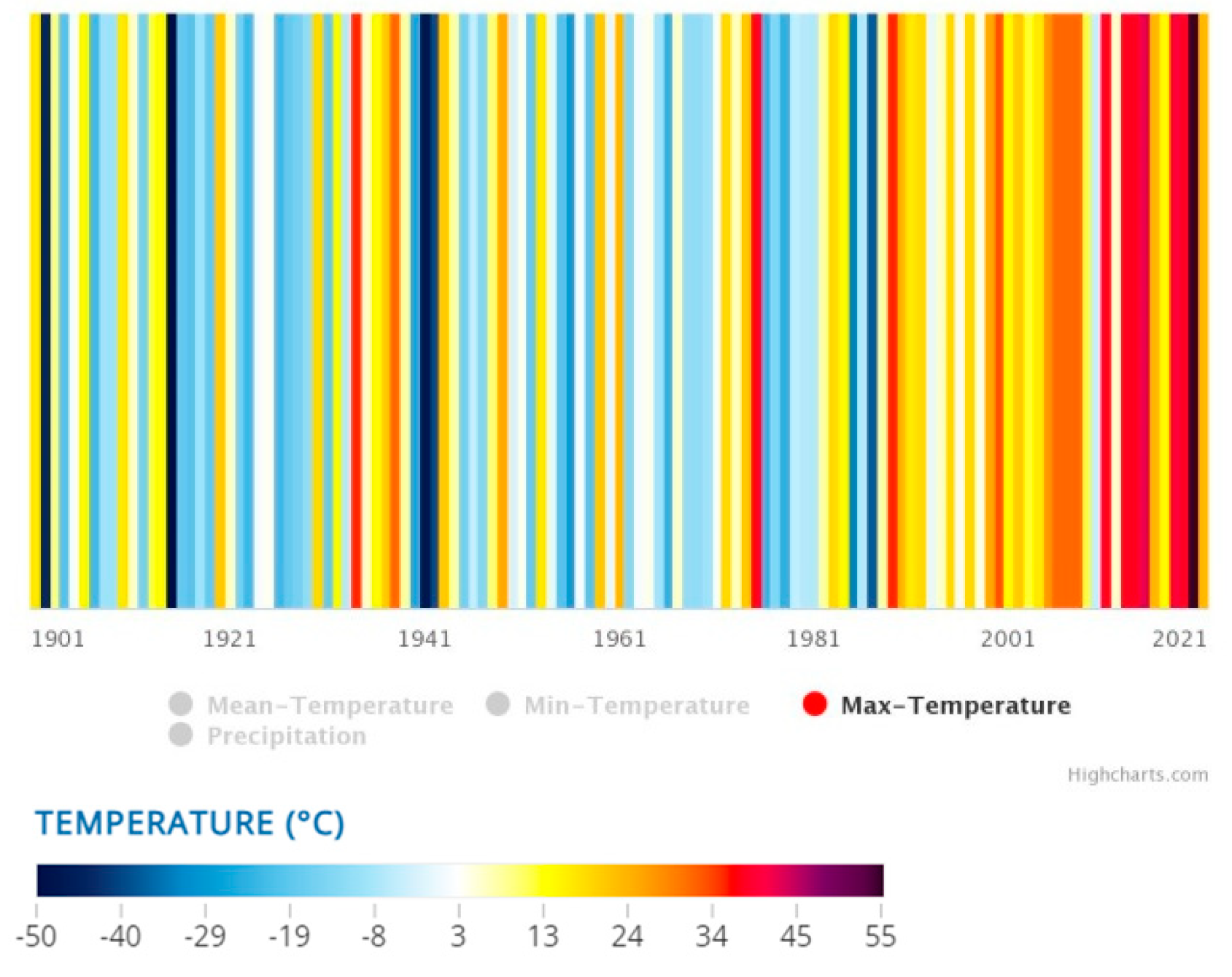




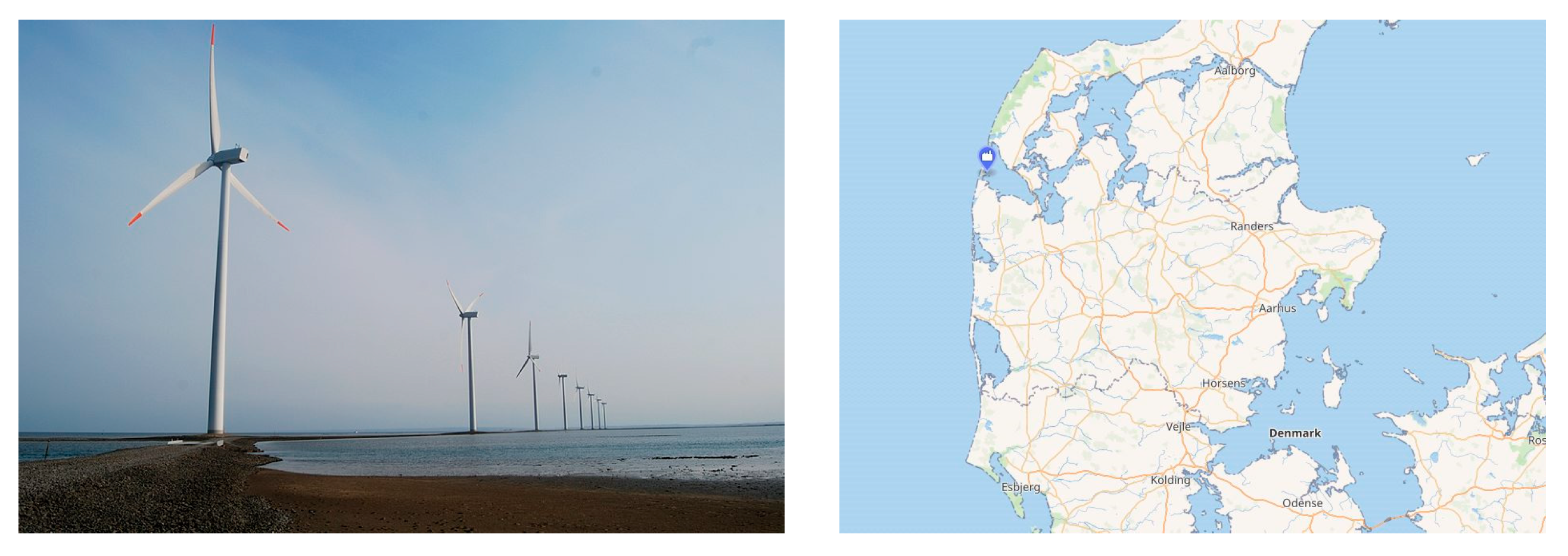
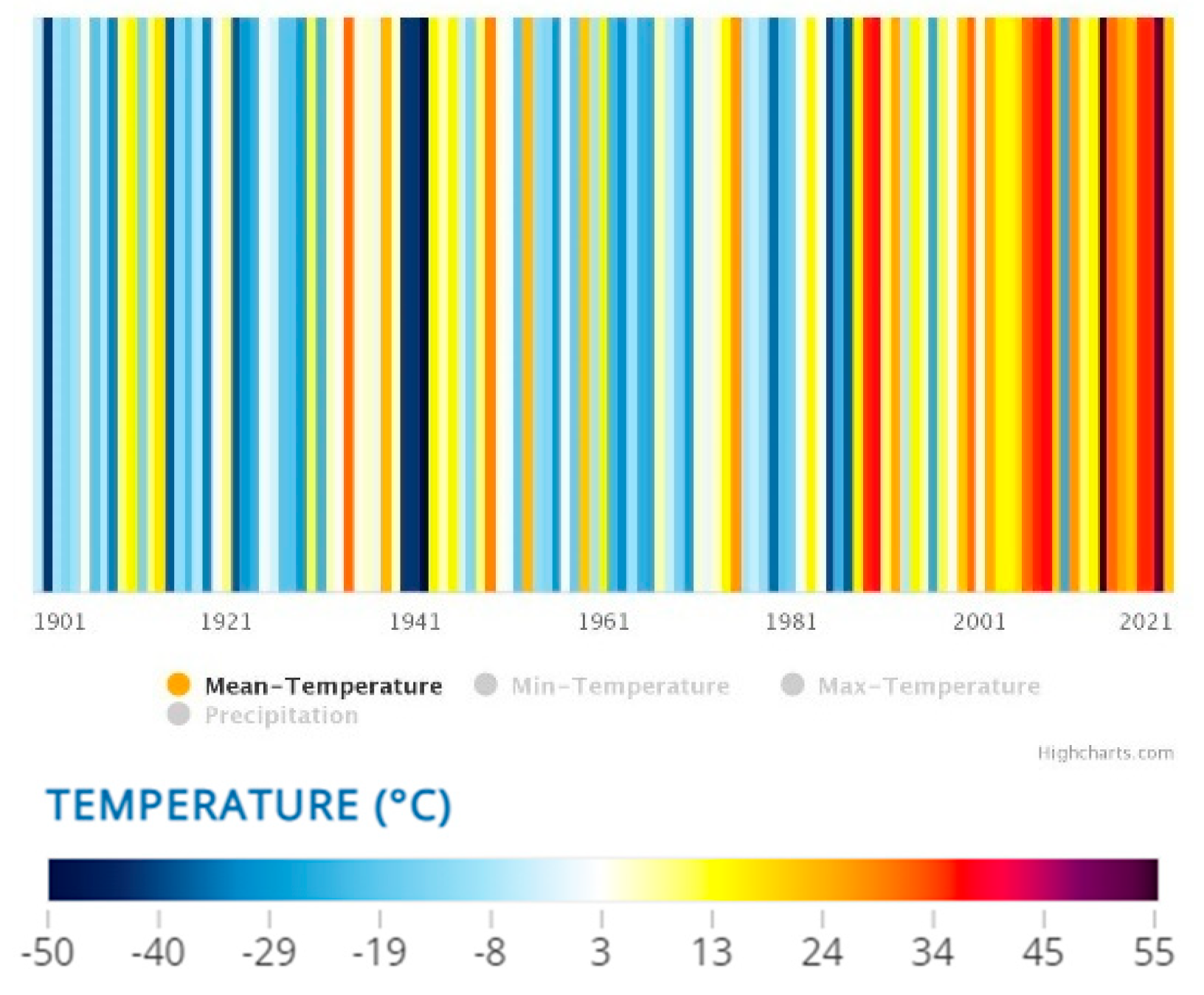
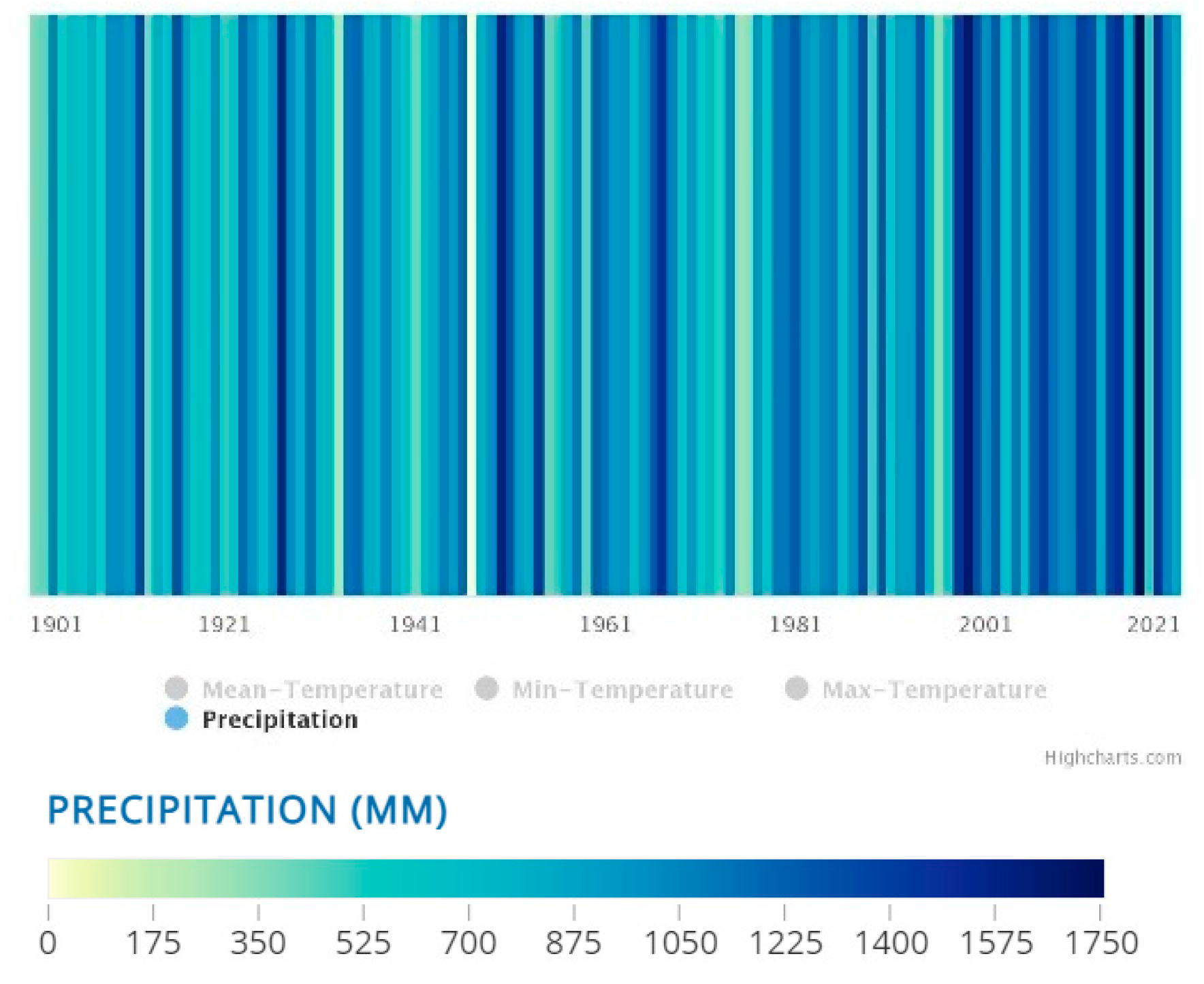
Disclaimer/Publisher’s Note: The statements, opinions and data contained in all publications are solely those of the individual author(s) and contributor(s) and not of MDPI and/or the editor(s). MDPI and/or the editor(s) disclaim responsibility for any injury to people or property resulting from any ideas, methods, instructions or products referred to in the content. |
© 2023 by the authors. Licensee MDPI, Basel, Switzerland. This article is an open access article distributed under the terms and conditions of the Creative Commons Attribution (CC BY) license (https://creativecommons.org/licenses/by/4.0/).
Share and Cite
Kalkanis, Κ.; Manousakis, Ν.M.; Pachigiannakis, Κ.; Psomopoulos, C.S. Microclimate Changes Due to the Operation of Energy Infrastructures. Environ. Sci. Proc. 2023, 26, 129. https://doi.org/10.3390/environsciproc2023026129
Kalkanis Κ, Manousakis ΝM, Pachigiannakis Κ, Psomopoulos CS. Microclimate Changes Due to the Operation of Energy Infrastructures. Environmental Sciences Proceedings. 2023; 26(1):129. https://doi.org/10.3390/environsciproc2023026129
Chicago/Turabian StyleKalkanis, Κonstantinos, Νikolaos M. Manousakis, Κonstantinos Pachigiannakis, and Constantinos S. Psomopoulos. 2023. "Microclimate Changes Due to the Operation of Energy Infrastructures" Environmental Sciences Proceedings 26, no. 1: 129. https://doi.org/10.3390/environsciproc2023026129
APA StyleKalkanis, Κ., Manousakis, Ν. M., Pachigiannakis, Κ., & Psomopoulos, C. S. (2023). Microclimate Changes Due to the Operation of Energy Infrastructures. Environmental Sciences Proceedings, 26(1), 129. https://doi.org/10.3390/environsciproc2023026129








